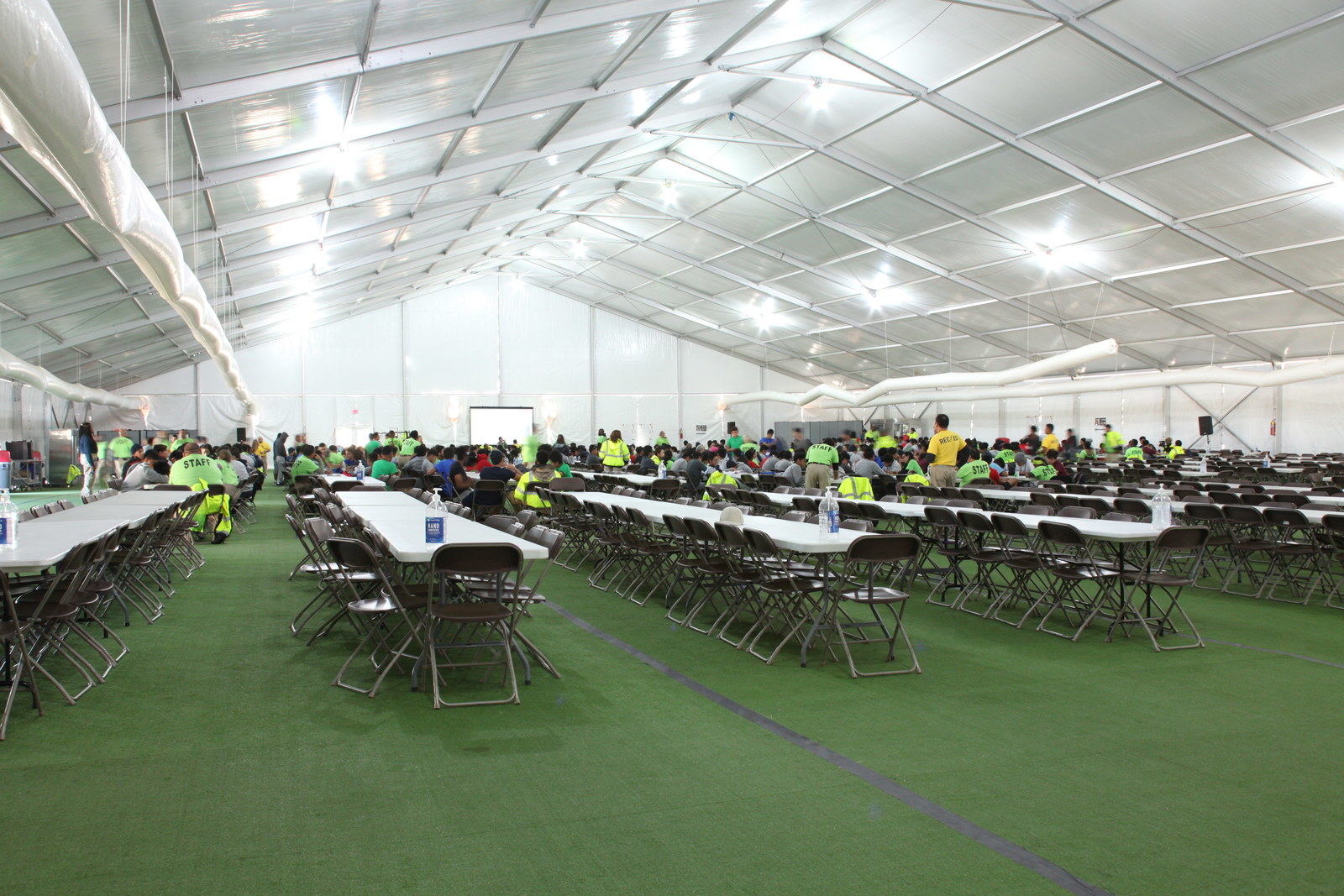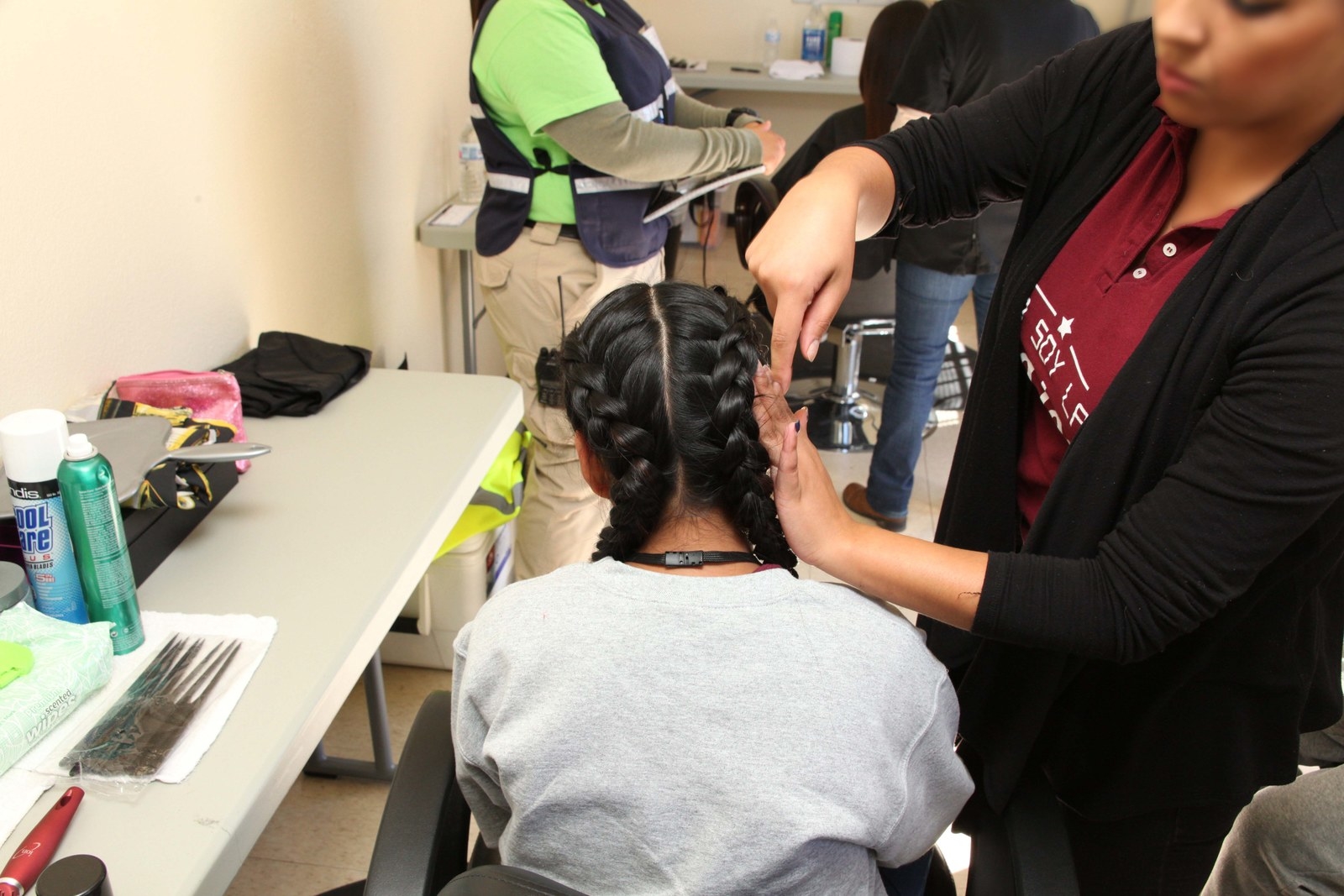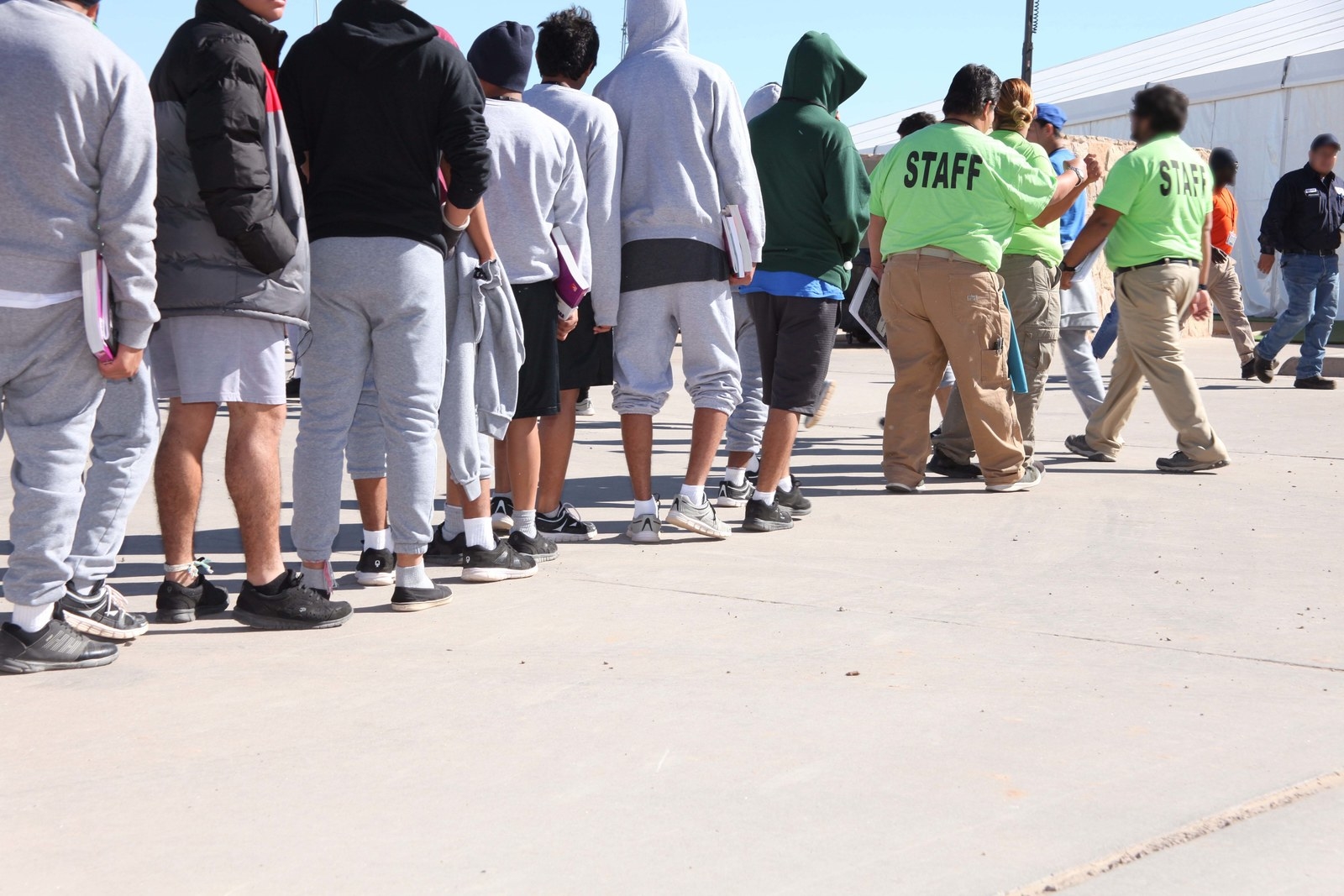
Ted Hesson reports for Politico:
The border crisis that President Donald Trump used to justify declaring a national emergency was never real, but a different crisis at the border is now starting to escalate as immigration officials hold hundreds of parents and children in makeshift facilities, including a parking lot.
During a press conference in El Paso, Texas, Customs and Border Protection Commissioner Kevin McAleenan argued Wednesday that a surge of incoming Central American migrants has pushed the U.S. immigration system to a “breaking point” and that all available resources should be devoted to manage it.
Rep. Veronica Escobar (D-Texas), a freshman lawmaker who represents El Paso, fumed Thursday over the border situation — which she also described as a crisis — during an interview after leaving the House floor.
“They knew that the numbers would increase,” she said. “Why were they not planning?”
Here’s what’s really happening now at the border:
The president’s frequent claims that unprecedented numbers of undocumented migrants are streaming into the country remain untrue. (Twice as many came during the 1990s and early 2000s.) And President Trump’s caricature of border-crossers as violent criminals is still belied by study after study showing that immigrants in general, and undocumented immigrants in particular, commit fewer crimes than the native-born.
“We have a capacity crisis, if you want to think of it that way,” Rep. David Schweikert (R-Ariz.) told POLITICO. “We don’t have capacity to deal with the populations that they’re getting at the border right now.”
Border Patrol anticipates that it will apprehend more than 55,000 family members in March, by far the highest monthly total since such record-keeping began in fiscal year 2012. The warmer spring and summer months ahead will likely bring even higher numbers.
The adult men from Mexico who a decade ago constituted most border migrants were able to be returned more swiftly, often simply by walking them across the border. While they were detained, the men required comparatively little in the way of social or medical services.
Furthermore, a 2008 federal law and related bilateral agreement allowed the U.S. to repatriate Mexican unaccompanied minors rapidly. The law, called the Trafficking Victims Protection Reauthorization Act, does not similarly authorize quick deportation for children from Central America.
By contrast, the greater volume of children among the new Central American migrants imposes on immigration agencies a need for more psychologists, nutritionists, educators and a host of others. Border officials contend that with the rise in families and children, more migrants have health issues than in the past.
Federal court orders in recent years have limited to 20 days the time children can be kept in detention, which means border agents often must release families into the interior. Such releases speed up processing, but demoralize agents and may encourage more migration, McAleenan argued.
The current migratory flow is also different because of the greater proportion of asylum applications at the border in recent years. Central American families arriving at the border frequently seek such refuge, which puts them into an immigration process that can take years to resolve.
The Trump administration argues that the asylum claims largely lack merit, but immigration court statistics don’t back that up. Roughly 25 percent of defensive asylum applications were approved by an immigration judge in fiscal year 2017, with 41 percent denied and 34 percent resolved in another manner, such as a withdrawn application.
Still, immigration hard-liners contend that lax asylum laws have been a magnet for Central Americans.
Mark Krikorian, director of the restrictionist Center for Immigration Studies, compared the current influx at the border to Europe’s migratory surge in 2015.
“We are seeing an Angela Merkel-style disaster on the border caused by loopholes in our laws that the Democrats refuse to even consider changing,” he said.
Democrats and advocates argue that the Trump administration’s response has exacerbated problems at the border.
Administration officials have known for months — arguably years — that more migrant families could trek to the United States, yet they appear to have been caught flat-footed.
During McAleenan’s press conference in El Paso Wednesday, reporters observed hundreds of parents and children held in a parking lot converted into a makeshift detention center.
“That’s their solution? That’s not a solution,” Escobar said. “In my community when these families are released, the community … scrambles and works hard to create hospitality centers, to feed these people, to help get them to their final destination. If we can do it with a fraction of the resources and power of the federal government, surely DHS can find a better solution.”
“They’ve been acting and responding in the same way over the last five years despite the change in the migration pattern,” she said.
The spending package approved by Congress in February included $192 million to construct a large processing center for migrant families in El Paso. The facility will house multiple agencies that deal with families in one building, but will take six months to a year to become functional, according to Escobar.
In the meantime, the Texas Democrat argues that if Trump truly deems immigration a national emergency, he should work harder to house and care for incoming migrants, perhaps with Federal Emergency Management Agency trailers or Red Cross assistance.
Under a January 2017 Trump executive order, federal immigration officials remain tasked with arresting and detaining as many migrants as possible, without a system of prioritization. Advocates contend the enforcement push has sapped resources that could be used to address the care and custody of newly arrived migrant families.
“They just detain any grandpa or mom that they find in the interior and they don’t prioritize who they should be putting in detention,” said Kerri Talbot, a director with the Washington, D.C.-based Immigration Hub. “They don’t need any more money, they need a new strategy.”
Under its “zero tolerance” strategy, the Trump administration sought to prosecute all suspect border crossers for illegal entry. Children couldn’t travel with their parents to criminal detention facilities, so they were reclassified as “unaccompanied” and transferred to the custody of the Health and Human Services Department. Thousands of families were split apart from April until June, only to see Trump reverse the policy and a federal judge order families reunited.
The administration also has sought to keep asylum-seeking migrants in Mexico for longer periods of time.
Using a practice known as “metering,” border officials have forced families to wait in Mexico, only accepting a certain number of asylum applicants at ports of entry each day.
“They’re afraid of waiting in Mexico until they can get in at the port,” said Theresa Cardinal Brown, director of immigration and cross-border policy at the Bipartisan Policy Center. “They’re balancing that against their desire to do it legally. And I definitely think its emboldening the smugglers to go to those who are waiting.”
McAleenan acknowledged during a December Senate committee hearing that metering could lead to an increase in the number of people attempting to cross the border illegally, saying it’s “certainly a concern.”
Still, the Trump administration has moved forward with a separate policy to keep asylum seekers in Mexico for extended periods of time.
The administration’s “remain in Mexico” policy — announced in late December and now implemented in several areas along the border — forces certain non-Mexican asylum seekers to wait in Mexico during the duration of an asylum case.
At the same time, the administration has moved slowly to disperse funding to address root causes of migration in El Salvador, Guatemala and Honduras.
POLITICO reported this week that hundreds of millions in aid dollars remain stalled at the White House budget office as aides wonder how seriously to take Trump’s threats to cut the funding.
“Mexico is doing NOTHING to help stop the flow of illegal immigrants to our Country. They are all talk and no action,“ Trump tweeted Thursday. “Likewise, Honduras, Guatemala and El Salvador have taken our money for years, and do Nothing. The Dems don’t care, such BAD laws. May close the Southern Border!“



























